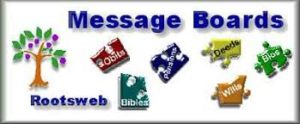
This is a continuing in my series on mistakes I made as a beginning genealogist. If you missed the earlier lessons, you can read about my trust issues with online trees, family lore, and source saving habits here, here, and here.
Let’s talk about confidence—or more accurately, the lack of it.
My first family tree was on paper. In 1983, my husband bought a TI-84 computer and a family tree cartridge. It allowed basic data entry but had one glaring flaw: no printer. And with no real internet access at the time, there was no way to share the tree beyond showing someone the screen.
By 1995, I’d discovered FamilySearch.org and quickly entered my 50 or so known family members into their online tree. Then came RootsWeb, and I uploaded my FamilySearch .paf file there. The tech was improving—and so were my skills—but confidence? That was still lagging behind.
I loved experimenting with new tools, but reliable records online were scarce, local training was hit-or-miss, and no one was talking about things like the Genealogical Proof Standard. Source citations? Not really a thing yet. DNA testing for genealogy didn’t exist. And AI—well, that sounded like science fiction.
In hindsight, I’m grateful the tools rolled out gradually. It allowed my learning to grow alongside the technology, making the whole experience feel manageable, even exciting.
Still, I was the new kid on the block. At local library presentations, I was often the youngest person in the room.
I wish I could say the older attendees embraced my enthusiasm, but… not so much. I was mostly ignored, and at times, subtly reminded that I lacked their decades of experience—which, let’s be honest, wasn’t inaccurate.
By the early 2000s, Ancestry.com had entered the scene, and I converted my old .paf file into a .gedcom and uploaded it. And almost immediately, I ran into resistance.
A DAR woman messaged me—clipped, curt, and in all caps—insisting I had made an error and must correct it IMMEDIATELY.
Embarrassed, I complied. I removed the ancestor in question and replied that my tree had been “corrected.”
But about a year later, I revisited that line after new records came online—probate records, in fact. And guess what? My original hunch had been right. So I added the ancestor back.
Not long after, the same woman messaged again, demanding I remove the name. This time, I had proof—and I told her so.
No response. Until a year later, when she messaged me once more, threatening to report me to Ancestry for ignoring her third “polite request.”
This time, I stood my ground. I reminded her that I had previously provided documentation and warned that if she contacted me again, I would be reporting her for harassment.
She didn’t write back.
Now, I’m no longer the youngest in the room. I’m one of the “old genealogists”—and I try hard not to repeat the mistakes made by those who once made me feel small. That’s part of why I’ve written this series: to let beginners know that we’ve all been there.
No one gets everything right. Not at the beginning, not even later. But we get better. We grow through doing, through missteps, through asking questions, and through helping each other.
Confidence in genealogy doesn’t come from having all the answers—it comes from being willing to keep learning. And I hope I never stop.

